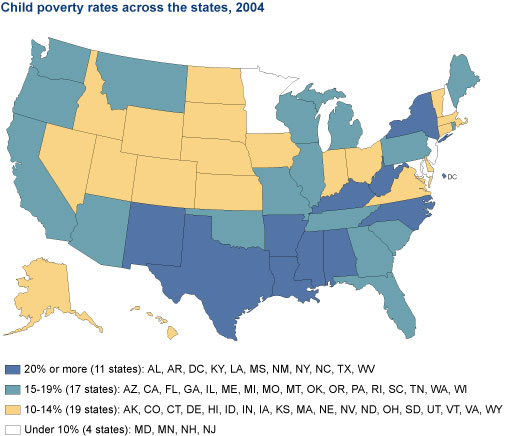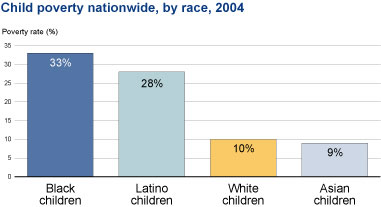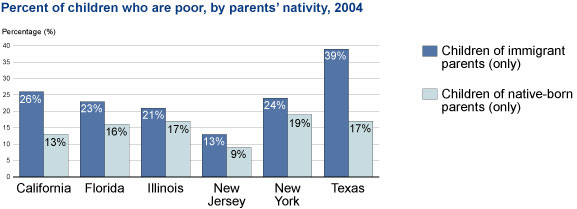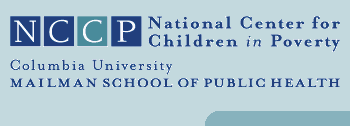The
aftermath of Hurricane Katrina exposed glaring truths about poverty in
America. Child poverty and material hardship are not just problems
experienced by the states in Katrina's path—they are problems that
plague Americans around the country. Just as residents began the
clean-up process, the U.S. Census Bureau released numbers showing that
in 2004, the poverty rate rose for the fourth straight year in a row—37
million Americans live below the poverty line. In the wake of this
national tragedy, poverty should once again become a topic of national
concern. Now is the time to focus on how to make sure no more children
are left behind. This series, Child Poverty in 21st Century America, addresses the challenge. |
Americans
don’t like to talk about poverty. We don’t like to believe that the
wealthiest nation in the world has families without the resources to
afford basic necessities, such as decent housing and sufficient food,
or basic services, such as medical and dental care and quality child
care. But American poverty is a reality. Twelve
million children live in families with incomes below the federal
poverty level—which is about $16,000 for a family of three and $19,000
for a family of four. Perhaps more stunning is that 5 million children
live in families with incomes of less than half the poverty level—and
the numbers are rising. Yet research clearly shows that, on average, it
takes an income of at least twice poverty to cover a family’s most basic expenses.[1] This fact sheet provides a portrait of poor children in the United States. How many children across the United States are poor or extremely poor? Rates of child poverty vary tremendously across the states. - Nationwide, 17% of children live in poverty (12 million).
- The
District of Columbia has the highest child poverty rate—30%. Across
other states, child poverty rates range from 7% in New Hampshire to 25%
in Arkansas.
Child poverty is
defined as children who live in families with incomes below the federal
poverty level (FPL). The annual FPL is $16,090 for a family of three
and $19,350 for a family of four. Extreme child poverty is defined as children who live in families with incomes below half the FPL. Half of the annual FPL is $8,045 for a family of three and $9,675 for a family of four. |

The highest rates of extreme child poverty are concentrated in the South. - After
the District of Columbia, Louisiana has the highest extreme child
poverty rate—13%—which is almost twice the national rate of 7%.
- Southern states comprise 7 of the 10 states with the highest rates of extreme child poverty.
Ten States with the highest rates of extreme child poverty, 2004* | STATE | % OF CHILDREN LIVING IN EXTREME POVERTY | | District of Columbia | 19.2% | | Louisiana | 13.3% | | Mississippi | 11.6% | | Arkansas | 10.5% | | New Mexico | 9.7% | | North Carolina | 9.7% | | West Virginia | 9.6% | | New York | 9.6% | | Alabama | 8.4% | | Tennessee | 8.4% |
*These
figures are estimates derived from U.S. Current Population Survey data,
March Annual Social and Economic Supplement. Due to sampling error, the
extreme poverty rates within these states may be statistically
indistinguishable from the rates in states not on this list. What are the characteristics of poor children in the United States? Poverty is especially prevalent among black and Latino children. - 33%
of black children live in poor families. In the 10 most populated
states, rates of child poverty among black children range from 22% in
New Jersey to 44% in Illinois.
- 28% of Latino
children live in poor families. In the 10 most populated states, rates
of child poverty among Latino children range from 17% in Michigan to
35% in New York and Texas.
- 10% of white
children live in poor families. In the 10 most populated states, rates
of child poverty among white children range from 4% in New Jersey to
10% in Georgia, Michigan, New York, Ohio, and Pennsylvania.[2]
- Although
black and Latino children are disproportionately likely to be poor,
white children comprise the largest group of children living in poor
families—35% of all poor children are white.

Having immigrant parents increases a child’s chances of being poor. - 26%
of children of immigrants are poor; 16% of children of native-born
parents are poor. (Children living with one immigrant parent and one
native-born parent are not included.)
- In the six states with
the largest populations of immigrants—California, Florida, Illinois,
New Jersey, New York, and Texas—the poverty rate among children of
immigrant parents ranges from 13% to 39%.
- In all six states, children living with immigrant parents are more likely to be poor than children of native-born parents.

Poverty rates are highest for young children. - 20% of children under age 6 live in poor families; 16% of children age 6 or older live in poor families.
- In
29 states, the young child poverty rate is five or more percentage
points higher than the poverty rate for children over age 6. For
instance, in Ohio, 21% of children under age 6 are poor, while 11% of
children age 6 or older are poor.
What are some of the hardships faced by poor children in the United States? Food insecurity, lack of affordable housing, and other economic hardships affect millions of American children. - 17% of households with children experience food insecurity.
- 36% of families who rent their homes spend more than a third of their income on rent.
- Nearly one in 10 Americans (9%) do not have a car.
Many poor children lack health insurance. - 19% of poor children lack health insurance—this is nearly double the percent of all children who lack coverage (10%).
- In
the ten most populated states, the percent of poor children who lack
health insurance ranges from 10% in Michigan to 29% in Texas.
Why child poverty matters Poverty
is associated with negative outcomes for children. It can impede
children’s cognitive development and their ability to learn. It can
contribute to behavioral, social, and emotional problems. And poverty
can lead to poor health among children as well. Research also indicates
that the risks posed by poverty are greatest among children who
experience poverty when they are young and among children who
experience persistent and deep poverty. [3] We can no longer afford to ignore child poverty in America. Endnotes This fact sheet was prepared by Sarah Fass and Nancy K. Cauthen.. 1. Based on results derived from NCCP’s Family Resource Simulator.
2.
Nine percent of Asian children live in poor families. Due to small
sample sizes in many states, state comparisons are not possible. 3. Cauthen, N. K. (2002). Policies that improve family income matter for children. New York, NY: National Center for Children in Poverty, Columbia University Mailman School of Public Health. Sources Sources:
State data were calculated from the U.S. Current Population Survey,
Annual Social and Economic Supplement, March 2003, 2004, and 2005,
which represents information from calendar years 2002, 2003, and 2004.
NCCP averaged three years of data because of small sample sizes in less
populated states. National data were calculated from 2005 data, which
represents information from calendar year 2004. Only children who live
with at least one parent are counted. Estimates were prepared by Ayana
Douglas-Hall and Heather Koball. Food insecurity data is from Nord, M.;
Andrews, M.; & Carlson, S. (2004). Household food security in the United States , 2003 (Food
Assistance and Nutrition Research Report 42). Washington, DC : U.S.
Department of Agriculture. Data on renters and car ownership is from
the American Community Survey, 2004.
|


